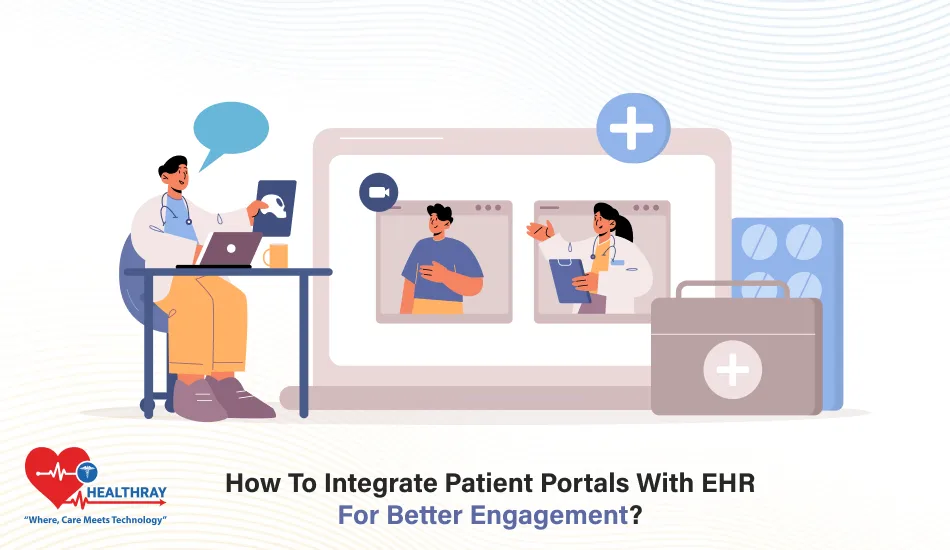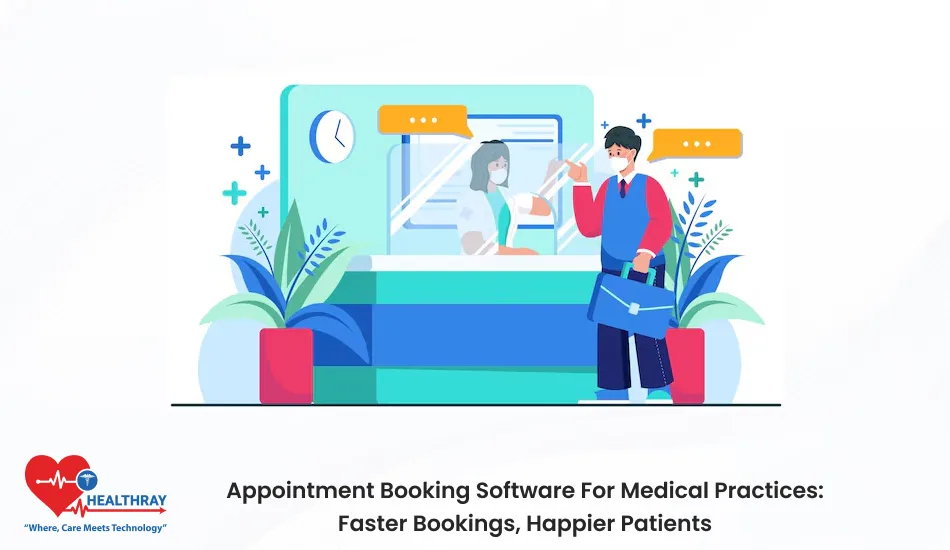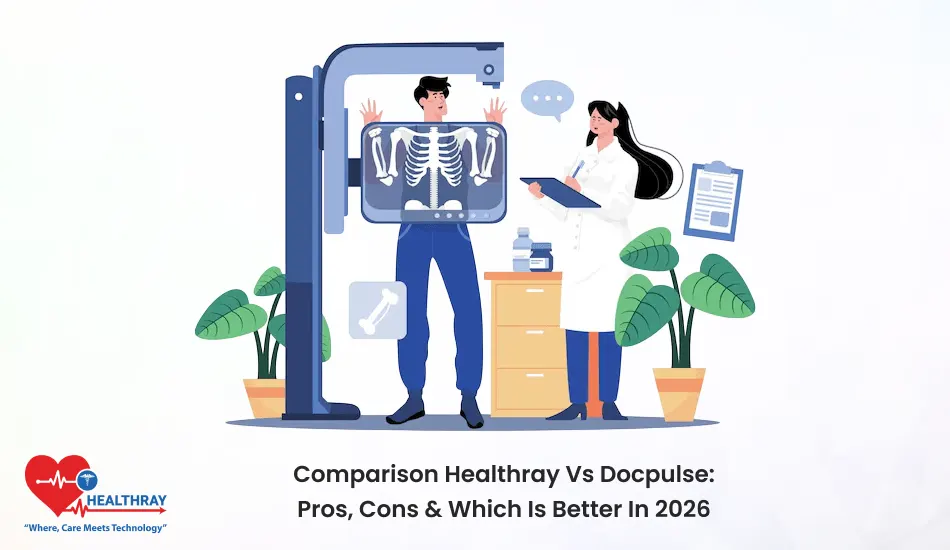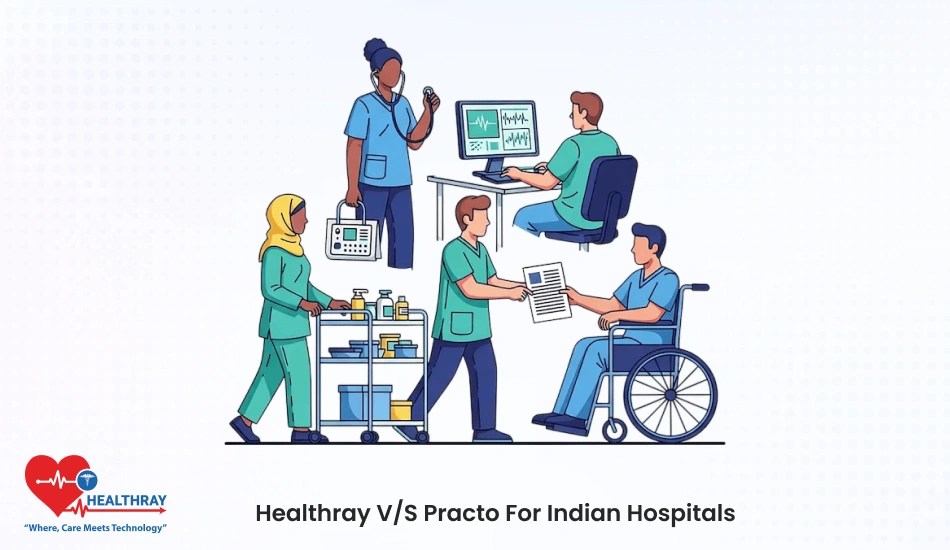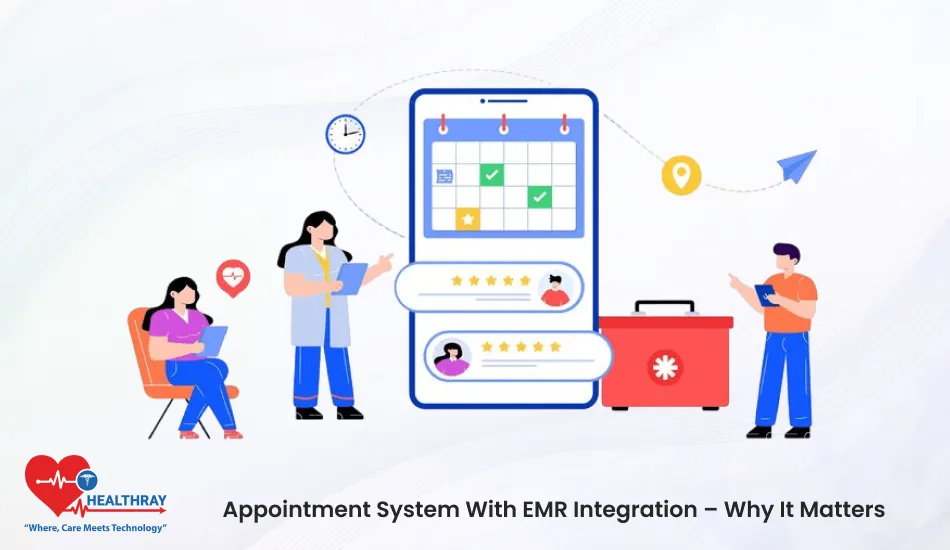Summary
Modern healthcare requires connection, not complexity. Patient Portal Integration in EHR allows patients to get access to care, communicate, and be informed every step of the way easily.
With smart EHR software, seamless EHR & telemedicine integration, and intuitive EHR templating & charting tools, hospitals can deliver faster, clearer, more personal care. The top EHR software companies have begun to change what patient experience means. Curious about the impact of this online bridge on engagement? Keep reading to find out.
Introduction
Modern EHR software does not simply store records; it connects hearts, health and data. With intelligent Patient Portal Integration in EHR, hospitals are no longer cold machines, they are human, digital and profoundly human connected.
Patients no longer search forever or place calls seeking updates, they learn about their health instantly, anywhere, on their own time. They can also book appointments, message doctors and track lab results in a few clicks.
This continuity encourages greater trust and engagement from patients. Every conversation is a chance to connect, inform and empower. For providers as well, integrations decrease the administrative burden and aid in providing care. It turns data into decisions and conversations into care.
Let’s start to learn how to work with each other and have healthcare truly be an interactive, trusted and patient-centred journey.
What Is Patient Portal Integration in EHR?

Patient Portal Integration in EHR refers to the integration of an online patient portal with the EHR software of a hospital. It gives patients a one-stop shop for their medical records, prescriptions, test results and doctor notes.
The integration means patients don’t have to call or come into the hospital for every little thing. Instead, they log in and instantly have access to their health information. It also allows them to book appointments, request refills and message their care team directly.
For care teams, this integration becomes one connected system that increases accuracy and decreases time in the care process. It cuts down on paperwork, eliminates duplication of data, and facilitates communication between staff and patients.
But most importantly, it fosters trust and engagement. Seeing their own health information in an accessible way helps patients feel engaged in their own care.
How Does Patient Portal Integration in EHR Boost Patient Engagement?
Here’s how Patient Portal Integration in EHR helps in patient engagement:
Simplifies Access and Improves Convenience
Patient Portal Integration in EHR allows patients to get instant access to their health data anywhere and anytime. With a few clicks, they can see lab reports, prescriptions, and notes from doctors. Consequently, it saves the bother of phone calling over and over and waiting for information.
As a result, this shifts the mental state of a patient because he or she no longer needs the hospital to monitor their condition. When care is this simple, patients stay engaged. Specifically, they log in more often, manage appointments actively, and feel more connected to their healthcare journey.
Builds Stronger Communication Between Doctors and Patients
Engagement begins with communication. Patients can securely message doctors through integrated portals. Additionally, the conversations in EHR software are recorded, and every interaction is stored securely, providing a consistent and trustworthy record of communications.
Consequently, this type of contact decreases miscommunication, and as a result, patients are well informed. Furthermore, doctors can post updates about treatment that patients can instantly reply to. Ultimately, this kind of dialogue fosters the trust and transparency that are so vital for patient participation in today’s healthcare.
Personalizes the Healthcare Experience
One of the main advantages of Patient Portal Integration in EHR is, indeed, the personalization capability. Specifically, the portal provides tailored reminders, health tips, and alerts for appointments based on personal habits and history. It personalises, rather than routinises, health care.
Furthermore, EHR templating & charting tools help facilitate the generation of personalized treatment and educational materials, including summaries, treatment plans, and other resources specific to each patient. As a result, it makes patients feel understood, appreciated, and supported throughout their journey, not just at the ‘larger’ interactions.
Strengthens Remote and Virtual Care
Modern engagement relies on connectivity; consequently, EHR & telemedicine integration offers just that. Patients can virtually consult with doctors, as well as submit live reports and schedule video visits. Moreover, this integration makes certain that the patient and the provider view the same updated information in each session.
Furthermore, it eliminates redundancy and ambiguity. So, patients enjoy frictionless care, even from home. In addition, doctors like it also because of time savings and accuracy. Ultimately, combined, these affordances position telehealth as an extension of engagement rather than a distinct experience.
Enhances Transparency and Trust
Transparency is easy when patients can view their entire medical record. Patient portal integration in EHR allows all tests, notes, and updates to appear instantly and clearly. In addition, this transparency supports the patient’s understanding of their treatment and progress. So, there is no mystery, because patients can check things for themselves, thanks to the EHR software.
As a result, as patients become clearer, they start to trust their providers more. Ultimately, trust leads to loyalty, and loyalty creates longevity. Therefore, transparency changes the role of the patient from passive recipient to active partner in care.
Boosts Clinical Efficiency and Care Coordination
As well as with patients, integration can also improve internal processes. With EHR templating & charting tools, physicians rapidly update patient records and transmit structured data to clinical units within their departments. Consequently, these tools guarantee that every provider is using uniform, valid information.
Furthermore, patients receive more seamless and coordinated care when more than one specialist works together. In addition, the participation of top EHR software companies means that data flows easily across platforms. This efficiency reduces wait time, duplication, and maintains engagement because of organized, consistent service delivery.
Encourages Continuous Connection Through Technology
Ongoing EHR & telemedicine integration allows for patient connection in between visits. Furthermore, portals now include chatbots, feedback forms, and health trackers created by top EHR software companies. Such characteristics create relationships rather than transactions.
Additionally, patients receive check-in reminders or wellness tips even after appointments. In fact, every interaction contributes something of worth, supporting their presence of care in the hospital. Ultimately, the ongoing nature of this digital relationship changes the experience of engagement as an event into a daily habit, thereby improving both compliance and satisfaction with the experience.
Prepares Healthcare for the Future of Engagement
The future of engagement is in smart data systems. In this regard, Patient Portal Integration in EHR prepares hospitals for that shift. Furthermore, assisted by EHR templating & charting tools, care teams observe and predict patterns and consequently offer individualized patient care.
When combined with EHR & telemedicine integration, it creates a full digital ecosystem supporting in-person and virtual care. Meanwhile, top EHR software companies continue to innovate and influence these experiences with AI, automation, and friendly design. Ultimately, patient portals are no longer just add-ons; rather, they are the heart of connected participatory healthcare.
Steps to Do Patient Portal Integration in EHR the Right Way

Patient Portal Integration in EHR system requires more than just software; it requires planning, precision, and mindset. These steps are important for connection, data correctness as well as patient satisfaction. Here is how to do Patient Portal Integration in EHR the right way.
Step 1: Choose a Compatible EHR Platform
This begins with choosing the EHR software that allows for streamlined compatibility with patient portals. Each and every system is different and not all have this kind of functionality or flexibility. A compatible platform also allows data to flow freely between the portal and the EHR software.
When it works, patients can immediately see their health information. Make sure to ask if interoperability standards such as HL7 or FHIR are supported by the system. These standards help interoperability among various healthcare applications. The right platform can also save time, integration costs, and improve the patient experience.
Step 2: Ensure Data Security and HIPAA Compliance
It is non-negotiable to keep patient data safe and secure. During Patient Portal Integration in EHR, the hospitals will adhere to HIPAA and other privacy regulations. All data transferred from the EHR to the portal should also be encrypted.
Turn on multifactor authentication to block intruders. Also set clear access privileges so only the proper staff are able to view and/or edit the records. Additional security includes periodic audits and automatic tracking of logs. A secure system unquestionably prevents breaches but also instils trust, which is critical to creating and maintaining a long-term relationship with patients.
Step towards digital era with our healthcare solution
Revamp your hospital facilities and embrace change for better healthcare management. Ease in managing and organizing large medical datasets leads to effective analysis. Seize the opportunity now!
Step 3: Enable Single Sign-On for Easy Access
Nothing frustrates patients more than remembering multiple usernames and passwords. One solution is Single Sign-On (SSO) Solution. With the activation of SSO, patients will only need one set of secure login credentials to access the portal.
This trivial functionality is useful to the user and results in logging into the service more often. On the provider’s side, it is easier for them to manage accounts and there are fewer IT problems. A good SSO solution should provide ease of access without jeopardizing security.
Step 4: Add Lab Results, Prescriptions, and Appointment Features
A portal has value when it provides actual, useful functionality. Use the system to offer critical services and functions such as prescription refills, lab results, and appointment scheduling. This allows patients to control their own experience of care.
They can check their test results, request medicines or book visits, all without calling the hospital. Doctors also benefit; incoming automated updates relieve them of paperwork and cut down on errors. This step takes the portal from an information board and transforms it into a place model of an interactive care hub that patients will actually use.
Step 5: Test for User-Friendly Design and Mobile Access
The best Patient Portal Integration in EHR won’t help you if your design is not simple and intuitive. Prior to launching, always test it from the patient’s perspective. Ensure navigation is easy, and the guidance is understandable.
Use actual patient comments to find confusing areas or missing elements. Make sure the portal is also mobile-friendly because users tend to favour smartphones over computers. So, it should be designed to work well on all screen sizes. The aim is for every click to be easy and every visit worthwhile.
Learn more: AI-Powered Insights: Unlocking Potential for Electronic Health Record Software Companies
Common Mistakes in Patient Portal Integration in EHR
Even the most advanced EHR software is not going to engage patients if the process for integrating is not done correctly. Healthcare organizations make avoidable mistakes which lead to lower user adoption and satisfaction. Here are some of the most common and what to do to avoid them.
Ignoring User Experience
User experience being ignored is one of the biggest mistakes in Patient Portal Integration in EHR. Patients abandon the portal if it is cumbersome. Bad design, confusing menus, or too long of a process will dissuade users from logging in. Hospitals need to involve actual patients during the testing phase and get feedback sooner. The top EHR software companies pay great attention to intuitive design because good usability is what keeps users over time.
Skipping Staff Training
Not even the best EHR & telemedicine integration will work if your staff is not trained properly. Doctors, nurses and front desk staff all need to feel comfortable using every function. If you don’t train, there are mistakes, delays and grumpiness all around. So, staff should promote portal use among patients when they are comfortable with the system.
Poor Data Migration
Patient Portal Integration in EHR, where older documents are imported into a new record, must be handled with utmost caution. Flawed data migration can result in lost files or inaccurate histories for patients. In such cases, the use of EHR templating & charting tools also helps standardize data formats and minimize errors.
Forgetting Mobile Optimization
Having mobile access is no longer optional; it is required. Patients want to use smartphones for their health care management. The impact of neglecting mobile optimization is a dramatic drop in portal usage. The top EHR software companies design responsive, mobile-friendly portals to stay connected to patients on the go.
Conclusion
Patient Portal Integration in EHR is not simply a technological upgrade, but rather a way to connect with patients on a more authentic level. Engagement occurs naturally when hospitals employ smart EHR software, secure systems, and simple designs.
Each click, message, and update engenders trust and convenience. If they sidestep the major pitfalls and emphasize the basics, the elements that aid connection, digital health care can resonate with patients. Ultimately, integration isn’t about technology, it’s about empowering patients and making care a seamless experience.
